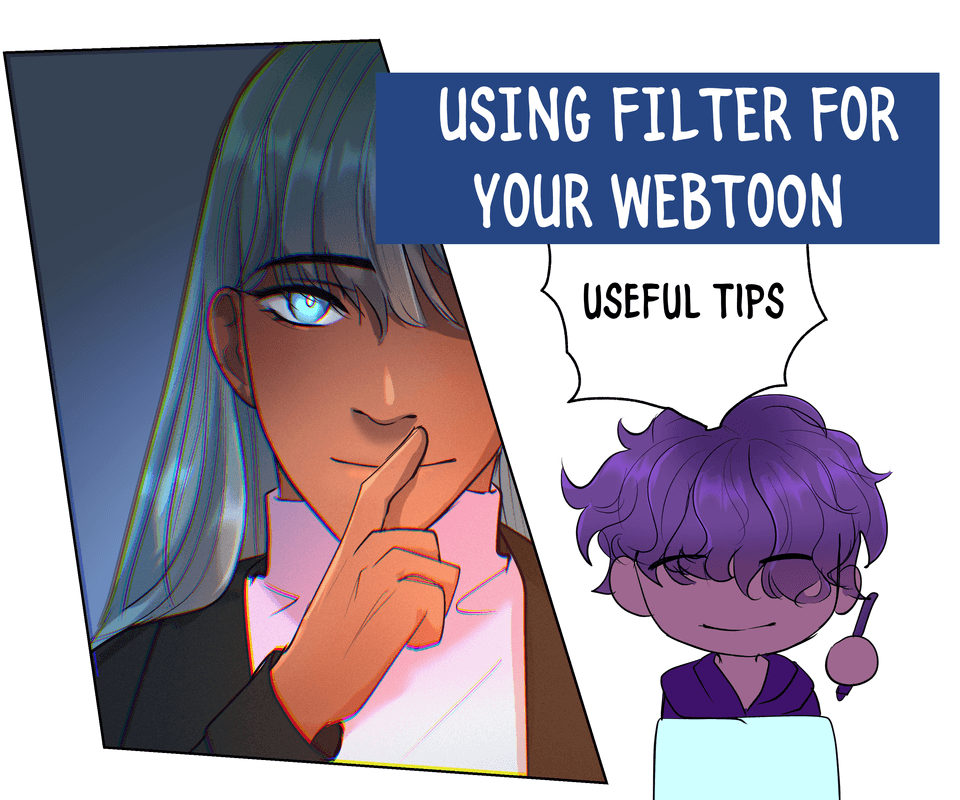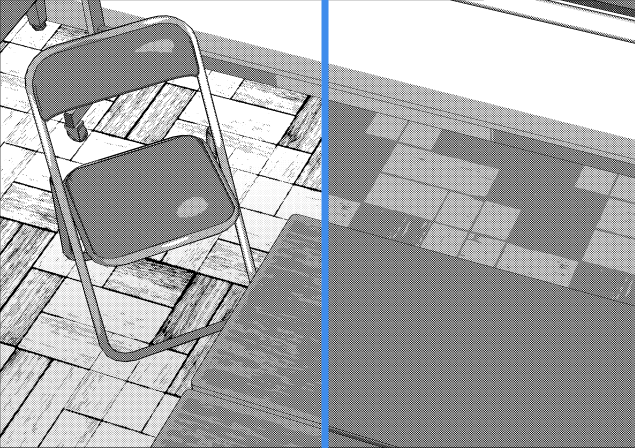3. Making the Rough Draft (1): Tidying Up Rough Lines
Since I am going to finish the work using the lines I make in this stage, I will tidy up the rough lines drawn in the previous lesson, “2. Generating Ideas” to make the image clearer.
[1] Dividing the rough draft
(1) I delete the "Rough 1” layer.
Then, I duplicate one “Rough 2" layer as a backup. (Right click above the “Rough 2” layer > [Duplicate Layer])
I won’t use the “Rough 2 Copy" layer again, so I will hide it.
(2) I create a new layer folder.
I place the “Rough 2” layer inside it and change the folder name to “Illustration”.
(3) I divide each motif into parts.
Then, I click the [Selection area] tool > [Lasso].
(4) I surround the left character with the [Lasso] tool.
It doesn’t have to be perfect, so I select the approximate outlines.
(5) Then, I automatically create a new layer with [Edit] menu > [Cut] > [Paste], and only cut out the character.
I change the character layer name to “*Character 1”.
I repeat the same procedure for other parts of the rough draft.
The names of the divided layers are “Foreground”, “Character 1”, “Character 2”, “Ground”, “Bottle”, and “Background”, each with a different color.
(Note: I always use the character “*” to indicate the line art layers.)
[2] Tidying up lines for each part
First, I will tidy up the lines of “*Character 1".
To check the balance, I lower or raise the opacity, and hide the other layers while drawing.
Here, I use the same “Darker pencil 2” as the draft. However, I will use a thinner line (around 10~20 px) this time.
I redraw some parts and remove unnecessarily thick lines with an eraser (Hard Eraser 1). I use a lighter color for the lines, and add decorations to make the character’s personality come out.
“*Character 1” looks like a boyish rabbit.
I tidy up the line art on the other layers (parts) in a similar way.
“*Character 2” looks like a girlish squirrel.
“*Bottle”: Since I am still drawing the rough draft, I draw the lines free hand.
Also, because the ladder is on top, I separated this into another layer (layer name “*Ladder") just in case.
The contents of the bottle are still vague, so I draw in more detail now.
Because the stage is set in the forest, I mainly drew vegetables inside the bottle such as onions, corn, tomato, cucumber, boiled eggs, beans, broccoli, and mushrooms.
I also draw a handmade ladder made of tree branches.
“*Foreground”: Rocks and leaves. I add some nature motifs in the foreground such as grass, mushrooms, and butterflies.
“*Ground”: I add a stepping stone in the short grass.
“*Background”: I use a lighter color in the background to emphasize the foreground.
[3] Tidying up lines with layer masks
I will tidy up a little bit where the lines are overlapping.
Although the overlapping lines won’t be visible after I add the colors, I wanted a better sense of the overall image, so I used the layer mask feature to roughly hide the overlapping parts.
Hint:
By using the layer mask, I can hide (mask) part of the layer.
Read the following article to learn how to use layer masks.
I select the “*Bottle" layer and click the [Create Layer Mask] icon. When the layer mask is created beside the layer, I select the layer mask → [Eraser] tool → “My Erasers" sub tool group and choose the "Hard eraser”.
I delete the part where the “*Bottle” layer overlaps with the character.
Using the same method, I hide the other overlapping parts with layer masks.
Since the excess amount of leaves in the upper left created a cramped feeling, I reduced the volume of leaves.
I also created a version with no leaves at the top left, but I couldn’t decide which would be better at this stage. I decided to choose between them after adding the colors.
The rough draft is complete.
Hint:
Clip Studio Paint is easy to use because you can quickly do things such as flipping the canvas even on files with lots of layers.
Select [Rotate/Invert] > [Flip Horizontal] in the [View] menu.
Then, select [View] > [Rotate/Invert] > [Reset Rotate/Invert] to reset the horizontal flip.
























Comment